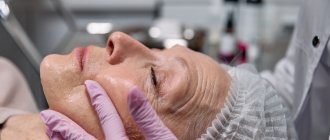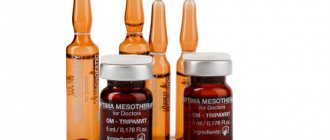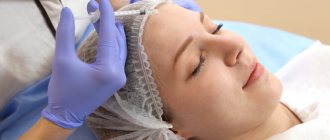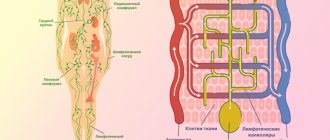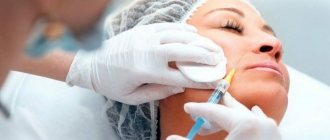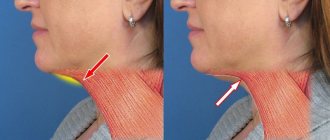In the medical field, the effect of weak low-voltage electrical impulses on deep tissue layers is called electrophoresis (EP). This is one of the most common physiotherapeutic methods, used in practice since the last century. It has a local effect on the treated areas, provides a general therapeutic and prophylactic effect, and in tandem with medications guarantees the safest and most painless administration.
The ability of dispersed phase particles to move in a liquid or gaseous medium under the influence of an electric field was discovered back in 1809. The authors of the discovery were P.I. Strakhov and F.F. Reiss is a professor at Moscow University. In 1887, the Swedish physical chemist Svante Arrhenius proposed a theoretical basis for medicinal EF. 50 years later, this proposal found practical application under the leadership, again, of the Swedish scientist A. Tiselius.
Since then, the EF method of physiotherapy has undergone periods of widespread dissemination and moments when its effectiveness became a reason for skeptical opuses. Today, it has found its application in various medical fields: from otolaryngology to gynecology and orthopedics.
Advantages
Advantages of electrophoresis:
- effective pain relief;
- rapid relief of swelling;
- normalization of water and salt balance;
- cell regeneration;
- no consequences;
- strong soothing effect on damaged tissues;
- effective vasodilation;
- blocking the development of inflammatory processes;
- normalization of metabolism. Objective: better absorption of the drug with the active ingredient;
- helping active substances penetrate deeply into the patient’s blood.
Like other techniques, electrophoresis has disadvantages. Minimal risk of burns. During exposure to electric current at the point of contact of the electrode with the skin, severe hyperthermia occurs.
Basic Concepts
- Galvanization = therapeutic effect of direct current.
- Iontophoresis = galvanization + medicinal substance.
- Ionic mesotherapy = iontophoresis with stationary electrodes.
- Disincrustation = iontophoresis of saponifiers.
Mechanism of action of the galvanization method
The action of direct current is based on the process of electrolysis. Substances located near the electrodes disintegrate into ions. Ions move under the influence of current. Water molecules break down into H+ and OH- ions. Near the electrodes, ions interact with water, forming electrolysis products: acid and alkali.
Electrolysis products can cause chemical burns at the site where the electrodes are applied: an alkaline burn under the cathode and an acid burn under the anode. This is especially true for stationary electrode placement. To avoid this, the electrode is separated from the skin with a hydrophilic pad. After the procedure, the gasket must be washed or replaced.
A change in ion concentration leads to irritation of skin receptors, resulting in a slight burning and tingling sensation. The passage of current through tissue causes polarization - the accumulation of ions on biological membranes. At a certain concentration of ions, cells enter an excited (electrically active) state. Cellular and tissue metabolism and cell excitability change.
At the same time, the passive transport of large protein molecules and other substances that do not carry a charge (electrodiffusion) and hydrated ions (electro-osmosis) increases. This means acceleration of cellular and intracellular renewal: rapid supply of building materials, nutrients and regulatory substances, as well as timely removal of metabolic products from the cell.
Use in cosmetology
Electrophoresis is used in cosmetology. The active components contained in the composition, which are injected into the subcutaneous tissue, are used without taking into account the stage of the disease. Electrophoresis is actively used in cosmetology and dermatology.
The active components of the substance are introduced into the skin during the procedure. The attending physician applies the method, regardless of the stage of development of the disease or type. The pronounced ionized form of the cosmetic product enhances the pharmacological effectiveness.
FAQ
Can electrophoresis be used for children?
Galvanization is often used in pediatrics. There is no need to be afraid of this procedure. It does no harm, is non-invasive, absolutely painless. But only a doctor should select the necessary medications, frequency and amplitude of the current.
Is it possible to combine electrophoresis with other procedures - acupuncture, massage, paraffin baths?
Electrophoresis is compatible with many other procedures, such as acupuncture, various therapeutic and cosmetic massages, and paraffin baths. But a complex treatment regimen is developed by a doctor, since between some manipulations it is necessary to take a break from several hours to several days.
Literature:
- ICD-10 (International Classification of Diseases).
- L. O. Neuropathology. - M.: Education, 1982. - P.307-308. Bogolyubov.
- Medical rehabilitation (manual, 3 volumes). // Moscow - Perm. - 1998. Popov S. N.
- Physical rehabilitation. 2005. - P.608.
- State Register of Medicines (GRLS) of the Russian Federation.
Themes
Intervertebral hernia, Spine, Pain, Treatment without surgery Date of publication: 12/23/2020 Date of update: 01/11/2021
Reader rating
Rating: 4.33 / 5 (3)
Definition and Action
During the procedure on the facial skin, the use of electrophoresis effectively enhances the effect of the active components of various masks, freshly squeezed vegetables, fruits, and natural collagen. Additionally applicable:
- aminocaproic acid;
- lidase;
- complex of vitamins C, B, others;
- healing mud extracted using technology;
- all kinds of placenta extracts.
The effect of each active drug during cosmetic electrophoresis is aimed at the procedure:
- effective pull-up;
- hydration;
- reducing the level of development of the inflammatory process.
The result is noticeable after 3 days.
Electrophoresis in cosmetology techniques
Types of electrodes for electrophoresis
Three main types of electrodes are used for procedures: labile, stationary and electrodes for galvanic baths.
Labile electrodes are used for sliding treatment of the skin of the face, neck, and décolleté. These are metal electrodes of different shapes. The form is selected for ease of use. Labile electrodes must slide over a gel or aqueous solution. Drying of the solution reduces skin conductivity and unpleasant tingling sensations appear. A conical electrode is usually used to treat the area around the eyes. Spherical or roller electrode - for cheeks, neck and décolleté.
Stationary electrodes are conductive plates that are attached to the skin. Stationary electrodes come in metal (lead or other metal plates), rubber (conductive latex) and graphite (disposable graphitized paper plates). The stationary electrode is on the skin for 10-30 minutes. Therefore, under the electrode there must be a pad of fabric or paper 0.5-1 cm thick. The pad is moistened with water or saline solution.
When performing iontophoresis, the pad is moistened with a solution of the medicinal substance. The purpose of the gasket is to improve the conduction of current and protect the skin from irritating substances that are produced at the electrodes. The gasket must be washed or disinfected after each procedure. It is convenient to use disposable napkins.
Electrodes for galvanic baths are graphite plates that are placed in a container with water. In this case, all the water or solution behaves like an electrode. Absorption of medicinal substances into the skin occurs from water.
Contraindications to galvanization
General contraindications for electrotherapy: oncological and pre-oncological diseases, febrile conditions, purulent processes, extensive violations of the integrity of the skin, systemic skin diseases, chronic heart and renal failure, pregnancy, the presence of a pacemaker, individual intolerance to current.
Specific contraindications (when working on the face): rashes, eczema, tooth sensitivity, dental cysts, thyroid diseases, cysts and tumor diseases of the breast.
Massages
After the procedure with electrophoresis, the skin:
- gains flexibility;
- provides free access to oxygen;
- rejuvenating effect.
Active beneficial components that are delivered to deep areas are quickly absorbed into the dermis.
Carrying out a cosmetic procedure provides an expressive effect when compared with those performed at home: masks, cosmetic creams, gels. Result: no side effects, safety, no severe pain. Therefore, facial electrophoresis is a common procedure in cosmetology.
Historical aspects of the technique
Electrophoresis was first announced by the German scientist Ferdinand Reis, who closely studied this technique in 1809, but this direction was not developed at that time. Only in 1926, the Swedish biochemist Arne Tiselius published a scientific work describing a special tube for electrophoresis, which by 1930 was improved by starting to make it from silver chloride.
Only in 1936 was the first apparatus designed for electrophoresis tested. At the same time, the shape of the tubes again underwent multiple changes, first turning into narrow cells, and then into glass sections. Such changes increased the optical susceptibility of the device and allowed it to more actively remove the heat generated during the passage of electric current. The device was tested for the first time on horse serum. During electrophoresis, the drug was divided into white stripes, which indicated different rates of migration of blood proteins, alpha, beta and gamma globulin, as well as albumin. After such success, tests were carried out on rabbit and then on human serum and the results were similar.
Thus, it was established that molecules with electrical charges in a liquid medium can, under the influence of electromagnetic fields, move to the region opposite to the charged electrodes. When using an ultracentrifuge in parallel with electrophoresis in subsequent experiments, Tiselius was able to more accurately differentiate the direction of migration processes of proteins and established the amount of proteins in the composition.
Already in 1950, a new, more improved experiment was carried out to separate proteins on the surface of filter paper, which was then cut into strips and dyed to determine the content of individual proteins in such solutions. At the same time, it was possible to record the migration process of proteins and obtain clear boundaries of their separation. The method of electrophoresis on various media is currently widely used in biochemistry, molecular biology, genetic engineering, and medicine.
Today, using electrophoresis, doctors diagnose:
- infectious and inflammatory processes;
- liver and kidney diseases;
- immune and genetic disorders;
- oncological neoplasms.
Also, modern medicine uses electrophoresis with protein and colloid solutions for physiotherapeutic techniques in the treatment of many diseases.
Features of the event
Many patients know that ion movement occurs with minimal exposure to electrical current. Using current, a medicinal product with active ingredients and cosmetic substances that carry a charge of electric current is injected through problem areas of the body. The procedure allows you to deepen up to 15 millimeters. The elimination period for the active components of the drug is 10-18 hours. There is an extension.
Electrophoresis is characterized by:
- toning effect;
- rapid resorption;
- drying effect.
The effect depends on the active drug.
In cosmetology, electrophoresis involves the activation of two electrodes - a negative and a positive charge. Electrode plates differ in size. Electrode platinum of small dimensions is a strong charge, an active electrode. Synchronized with the problem area, a large plate - on any part of the body.
Before starting, you need to apply the gel. This ensures maximum penetration into the skin.
Device structure
The electrophoresis apparatus is an alternating current rectifier, semiconductor (now), electron tube (formerly). It operates from a standard network with a frequency of 50 Hz and a voltage of 220 V and is equipped with a milliammeter.
Electrophoresis devices operate primarily using galvanic current. It is continuous, low voltage, constant intensity. Always passing in one direction, the current is able to maintain polarity, strength, and voltage. The action is comparable to a blow of wind that does not change its strength. Thanks to this, the electrophoresis device is able to “deliver” drugs deep into the body, affecting the tissues and mucous membranes of the body. For direct current, even dense tissues can be considered permeable.
Preparatory process
Cosmetologists calculate the current strength to eliminate side effects and feelings of discomfort. No side effects, quick results, no recovery period.
The skin, depending on its location on the body, is sensitive. For example, in the area of the nose and eyelids there is an increased level. Discomfort, which develops into severe pain, requires a reduction in the current strength. This eliminates consequences, side effects.
The cosmetic active drug is delivered to the problem area through the sebaceous glands. The concentration is determined by the cosmetologist.
For what disorders are these procedures prescribed and how are they carried out?
Electrophoresis according to Ratner (with aminophylline and papaverine):
- Circulatory disorders in the cervical spine
- Injuries and hypoxia during pregnancy and childbirth
- Torticollis
- cerebral palsy
- ZPR
- Specific disorders of speech development (especially effective in combination with speech therapy massage and speech therapy classes)
Electrodes are applied at the back in the cervical-collar area, at the front on the right side of the chest. Exposure time 15-20 minutes. The number of procedures is 10-14.
Electrophoresis with magnesium:
- Increased excitability of the nervous system
- ADHD
- Sleep disturbance
- Astheno-neurotic syndrome
- Tiki
- Stuttering
- Autonomic dysfunction
- Headache
Electrodes are applied at the back in the cervical-collar area. Exposure time 15-20 minutes. The number of procedures is 10-14.
Electrophoresis with an antispasmodic on the lower extremities:
- Cerebral palsy spastic form
- “Tiptoes” (the child often walks, resting only on the front of the foot)
- Flat valgus foot
Electrodes are applied to the calf muscles. Exposure time 15-20 minutes. The number of procedures is 10-12.

